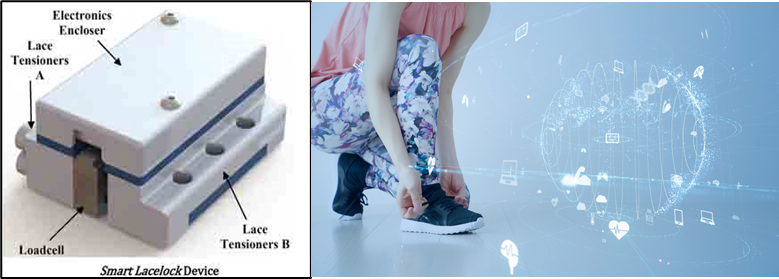The Problem:
There are limitations in the accuracy and convenience of wearable smart sensors, which are predominantly wrist-based, and fail to accurately assess lower-limb motion. This provides unreliable estimations of wearer activity and energy expenditure. Standalone inertia measurement units, which offer an alternative, are inconveniently strapped to the body, lacking reliability for daily use. Shoe insole-based sensors and smart shoe technology also exist but their durability for long term usage is unsatisfactory.
The Solution:
Researchers at the University of Alabama have developed an innovative wearable sensor that can easily attach to the back of a shoe using various shoelace attachments, incorporating sensors to measure shoe tension. Prototype testing has demonstrated exceptional accuracy in identifying activity modes (sitting/standing, walking, and running) and effectively quantifying gait quality, leg muscle strength, and overall health.

Benefits:
·Has broad applications in health and wellness, including estimating energy expenditure, monitoring daily gait quality,
·Can detecting unexpected gait events, assessing fall risk for vulnerable individuals, and quantifying rehabilitation outcomes in real-world settings
·Supports adaptive control of wearable assistance devices, and enhances athlete performance through real-time measurement of leg movements
Publications: